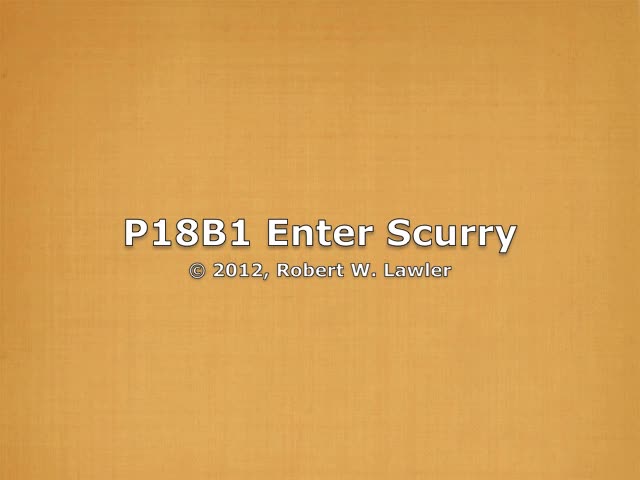
P018B1 Clip Notes
| Notes:n:nn | by Analyst, 10/17/2024 |
| Setting,Props | Brookline, Carriage House: |
| Actors,Aims | Peggy and Mom, with Scurry; Bob on camera. |
| Episode A: | Mom: Here comes Scurry. [a 2-year old scotch terrier] Hello there, Scurry. You see Scurry? Here’s Scurry. You’re never going to be a leading actor, Scurry. You don’t know how to come up stage and steal the action. You need some of that happy breath, too. That’s Scurry. |
| Episode B: | Mom: Here, come over here, Scurry. Come on. Come on, turkey. [Scurry starts licking Peggy’s foot] What do you think of that? It didn’t even tickle, huh? You silly dog. |
| Episode C: | Mom: You know how to pat Scurry? She likes to have her ears rubbed. You want to rub Scurry’s ears?… I’m just (??) keep sticking (??). Isn’t she nice and soft? Here, Scurry. Nope. Peggy doesn’t want to pat your teeth, you silly dog. [exit Scurry] |
| Episode | |
| Summary by AI |
Scurry, a 2-year-old Scotch Terrier, is introduced and greeted. The speakers repeatedly point out and call Scurry over. A joking remark says Scurry won’t be a “leading actor” because she doesn’t steal the spotlight. There’s a playful comment about needing “happy breath,” teasing the dog’s breath. Scurry is encouraged to come closer with friendly coaxing like “come on, turkey.” Scurry licks Peggy’s foot, and they note it didn’t tickle. The dog is affectionately called a “silly dog.” Peggy is guided on how to pet Scurry, especially rubbing her ears. Some dialogue is unclear/mumbled during the interaction. Peggy declines to touch Scurry’s teeth, and Scurry exits the scene. |
| Narrative by AI |
In a brief home video clip, a small Scottish Terrier named Scurry ambles into view, introduced with casual warmth and a touch of humor. The scene feels domestic and familiar, with voices off-camera guiding the moment as much as the dog’s movements do. Scurry is acknowledged, coaxed forward, and gently teased—there’s a lighthearted remark about the terrier’s chances at stardom and a playful comment about “happy breath,” setting a tone that’s affectionate rather than critical. As Scurry moves closer, the interaction becomes more tactile and immediate. There’s a hint of stage direction—calls to “come over here” and “come on”—that frames the dog almost like a performer, even as she responds in her own canine way. The moment is unhurried, drawing attention to small details: a wag, a nuzzle, the rhythm of a household conversation built around a pet’s presence. The focal point arrives when Scurry begins licking the foot of someone named Peggy. The off-camera reaction is amused and observational, noting that it didn’t even tickle. This small, ordinary act turns into shared commentary—a collective smile at an uncomplicated gesture. It’s a snapshot of how pets create spontaneous, low-stakes moments that families remember. The clip also showcases a gentle lesson in how to interact with a dog. There’s guidance about petting—especially rubbing the ears, a detail that suggests familiarity with the dog’s preferences. Even a quick aside about not touching Scurry’s teeth balances safety with affection, modeling how adults often coach children in respectful, confident handling of pets. By the end, Scurry exits as quietly as she entered, leaving behind a soft echo of domestic life: informal coaching, playful banter, and the kind of small, tactile connection that defines many human–animal relationships. The scene doesn’t strive for drama; instead, it highlights how ordinary moments with pets can be charming and instructive, offering a glimpse into daily companionship that’s both simple and meaningful. |
| Link Index | Panel P018, Language Development, Object Exploration, Social Interactions |
| Themes, Interplay |
